Iris van Herpen creates "bubble-like exoskeleton" dresses for Autumn Winter 2016 collection
Optical light screens created mirrored rainbow effects at Dutch designer Iris van Herpen's Autumn Winter 2016 fashion show in Paris, which featured intricate garments that looked like soap bubbles (+ movie).

The designer – who is well known for her technology-focused fashion – wanted to showcase her "state of dreaming" through the collection and presentation, which took place on Tuesday during Paris Fashion Week.
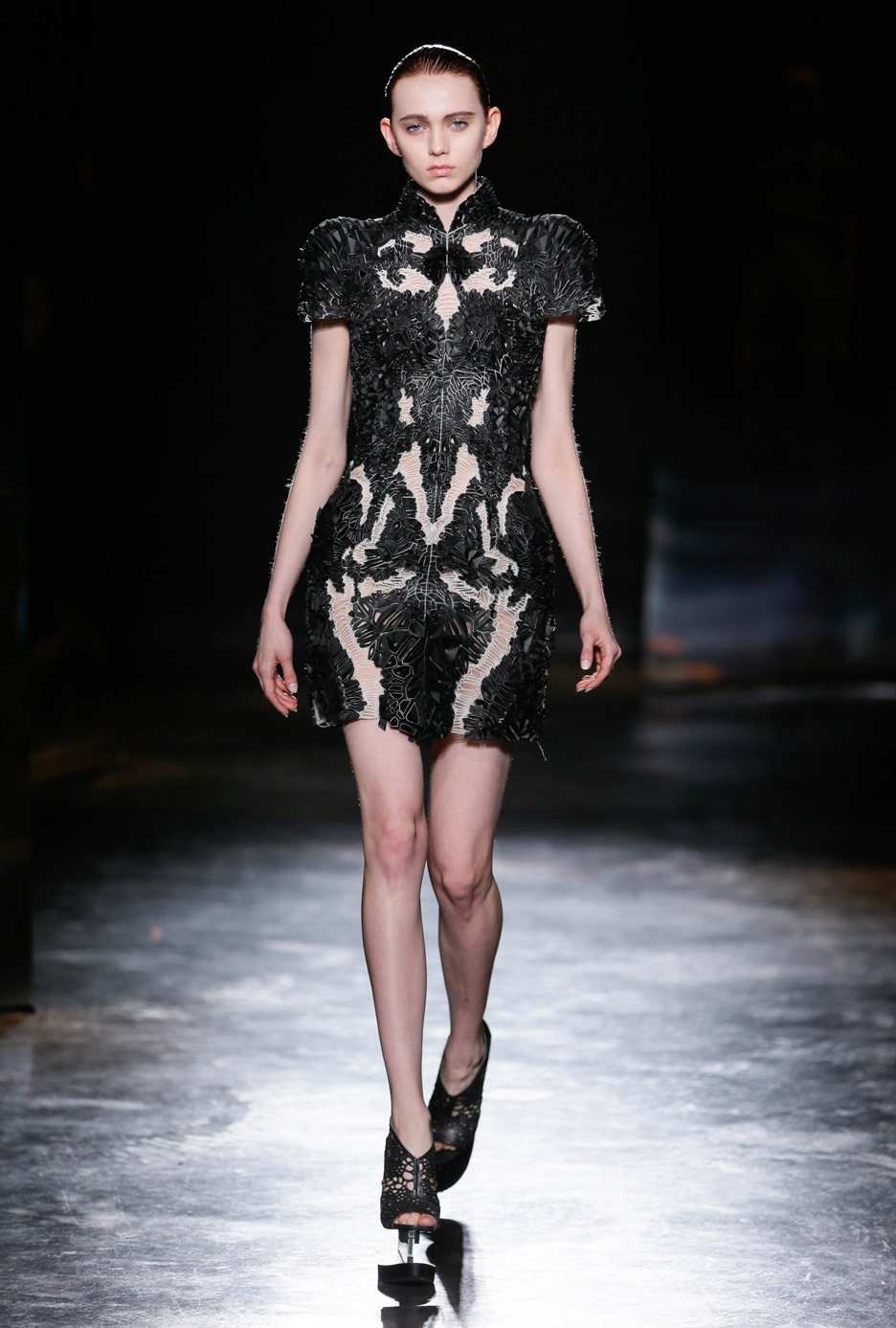
"When I design, the draping process most of the time happens to me unconsciously," said van Herpen. "I see lucid dreams as a microscope with which I can look into my unconsciousness."
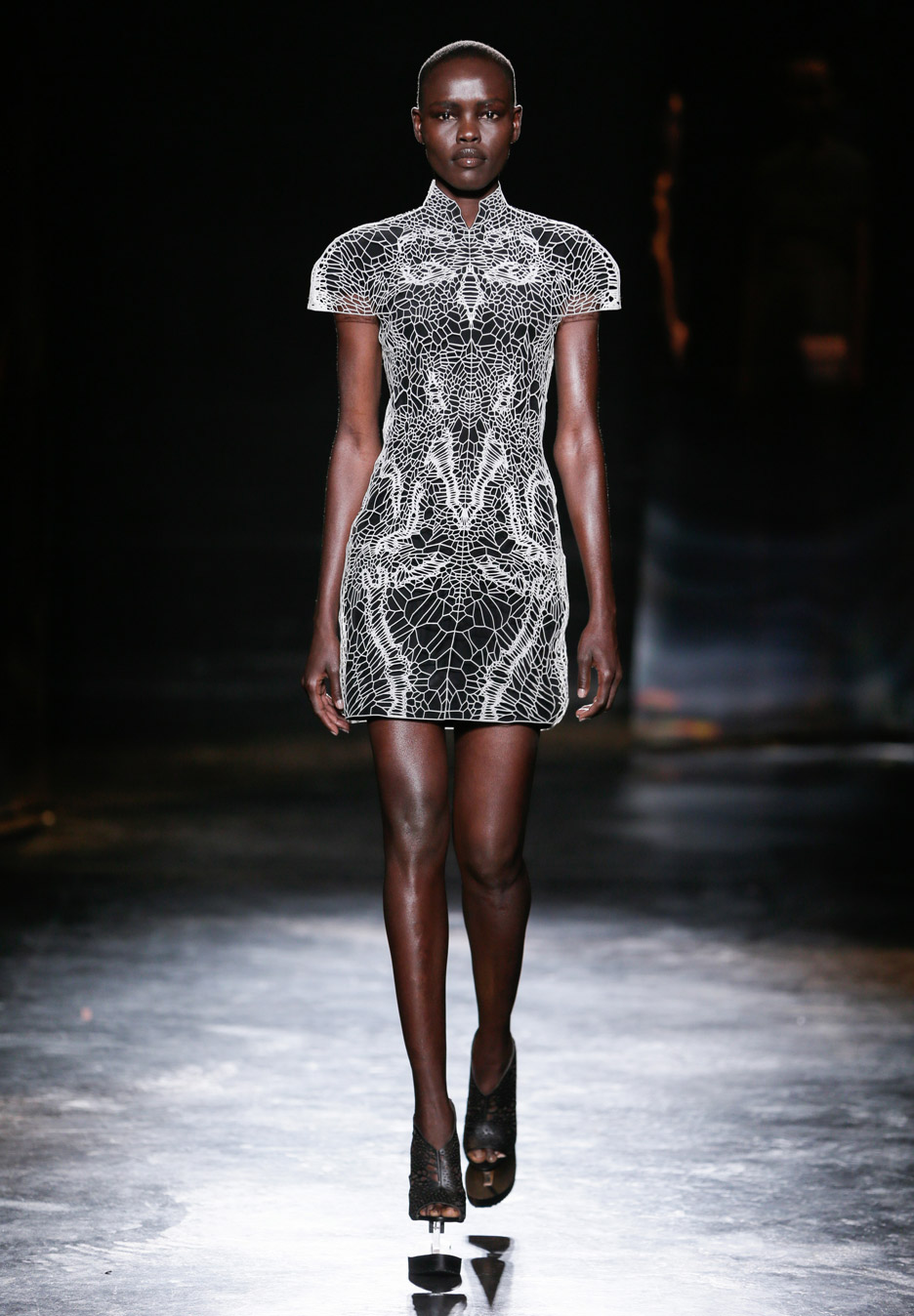
"In this collection, I have tried to bring my state of reality and my state of dreaming together," she added
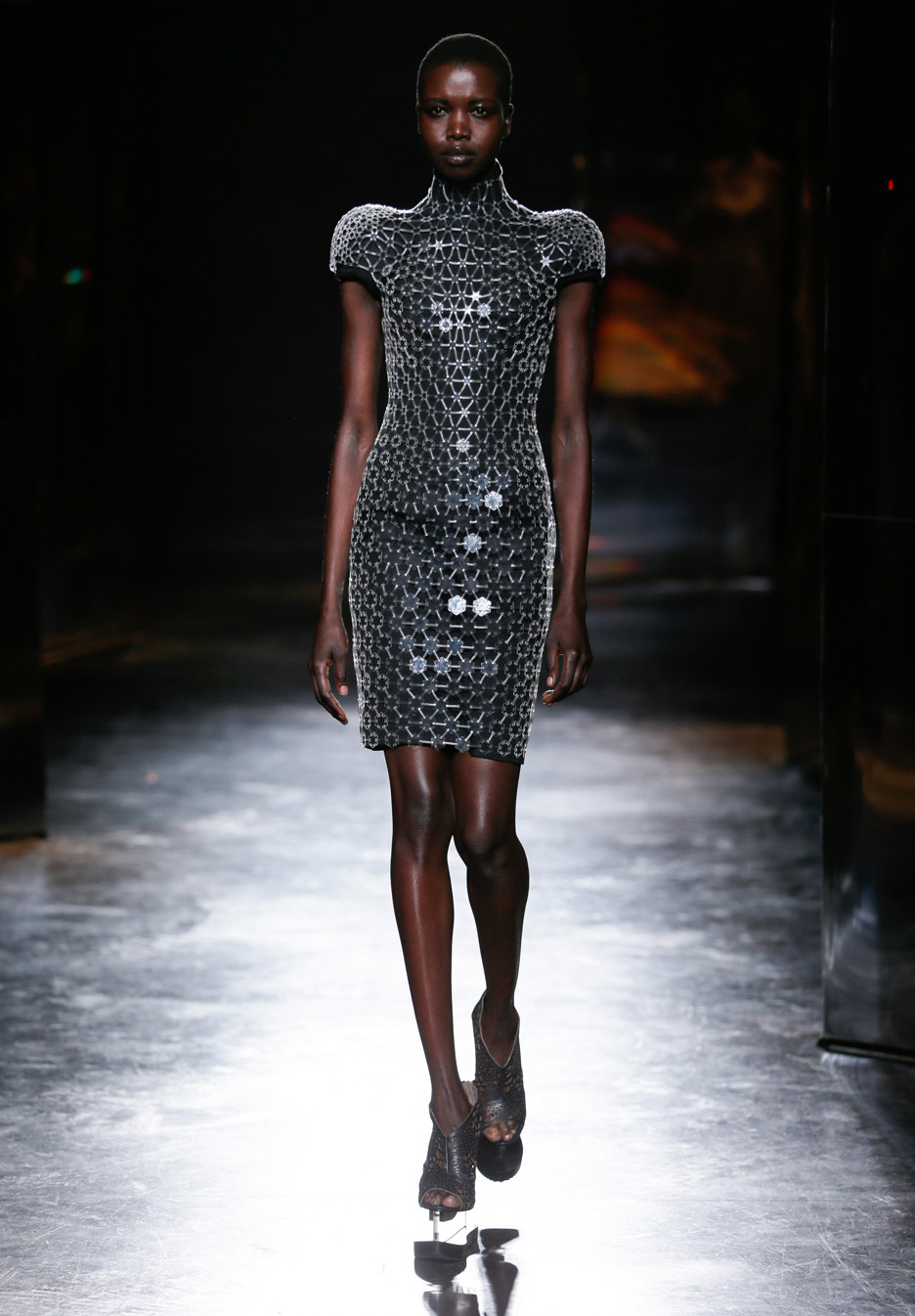
Garments were separated into two main looks: Lucid and Phantom dresses. Both included voluminous circular silhouettes were presented in a colour palette of iridescent nudes, greens and grey.
The Lucid looks were a continuation of the designer's collaboration with artist and architect Philip Beesley. The pair previously worked together to create 3D-printed dresses for van Herpen's Spring Summer 2015 show.
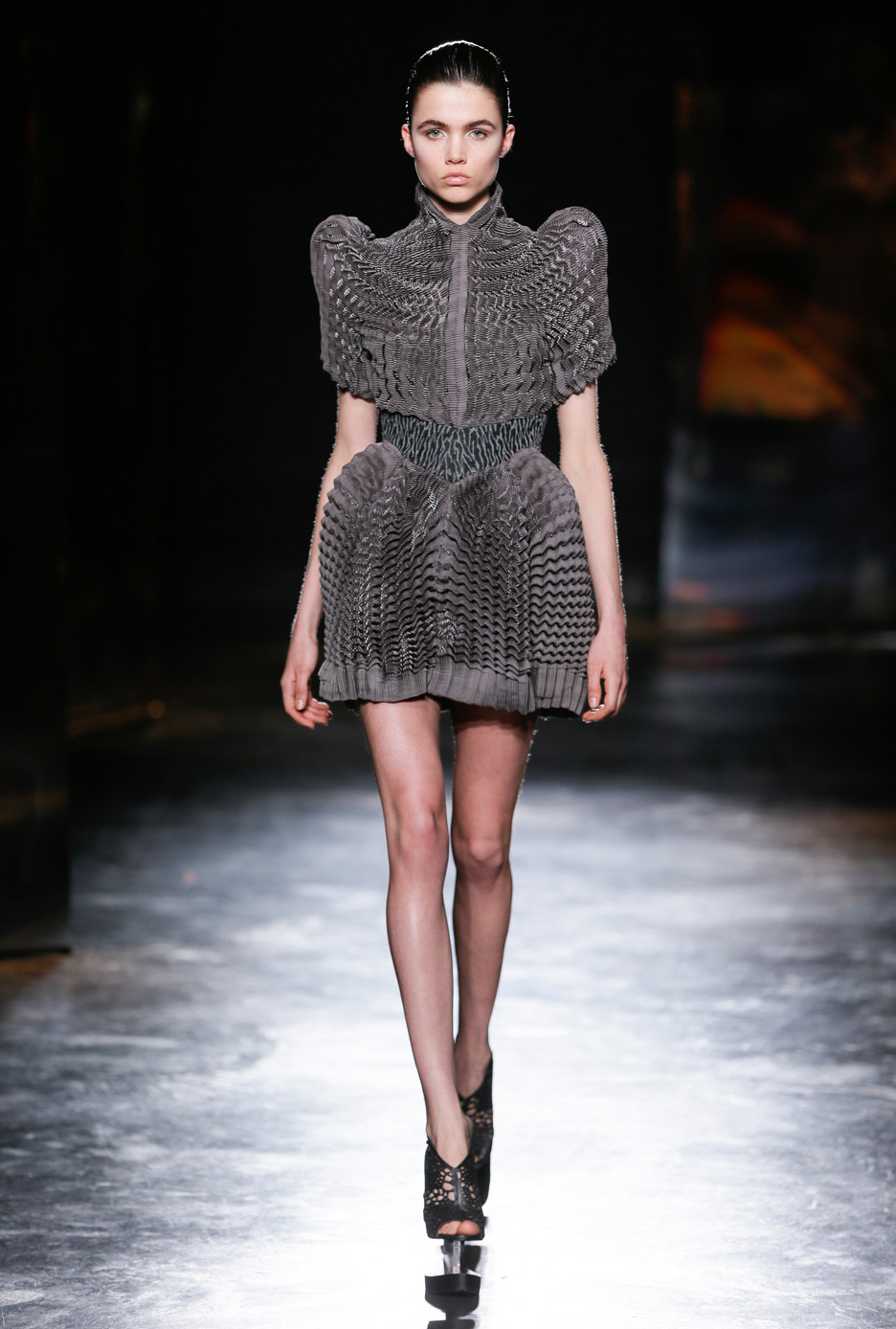
These garments – designed to appear as a "glistering bubble-like exoskeleton" – were made from transparent hexagonal laser-cut elements, that are connected with translucent flexible tubes.
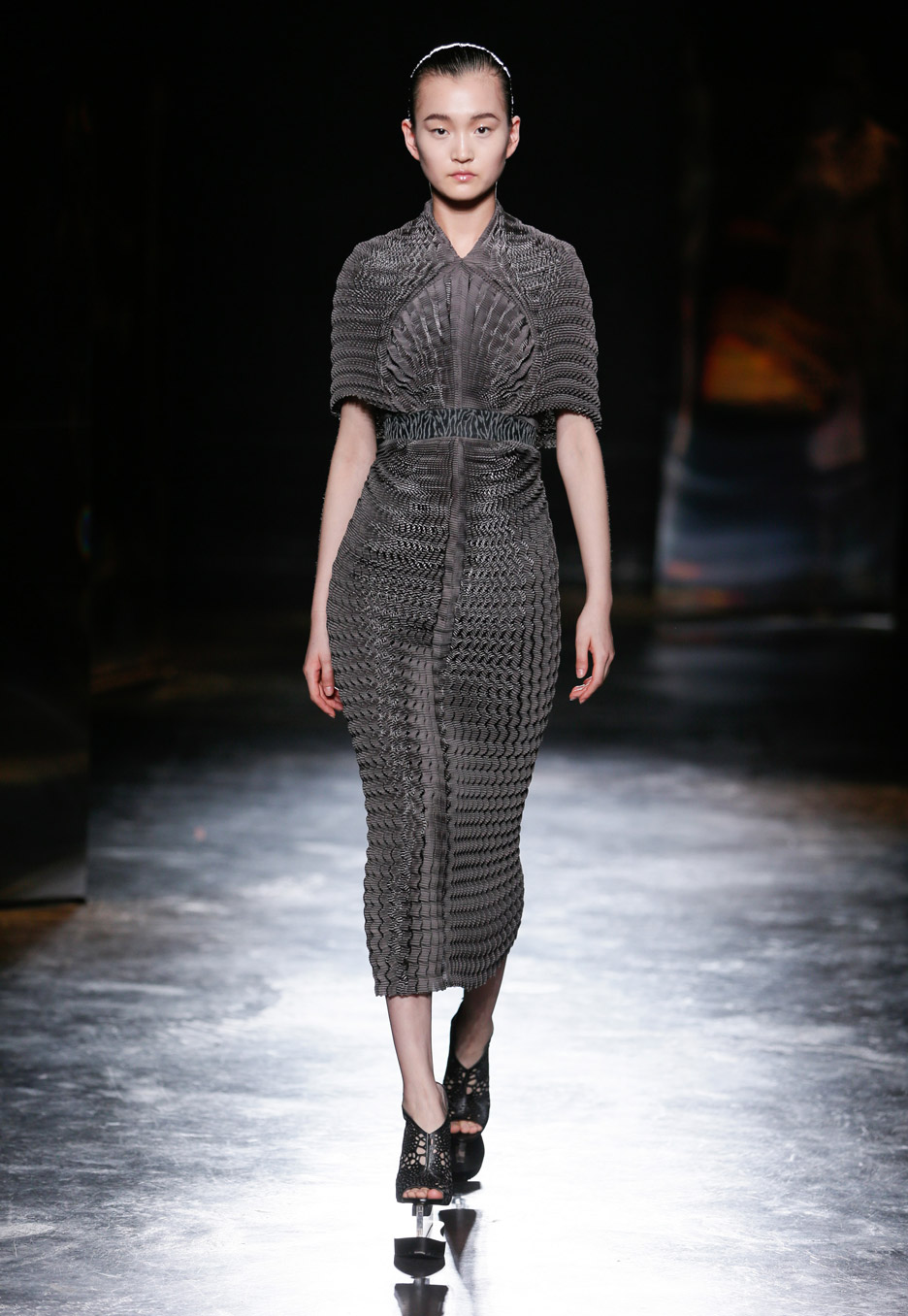
The Phantom outfits were made with a light-weight tulle fabric, to which iridescent stripes were fused.
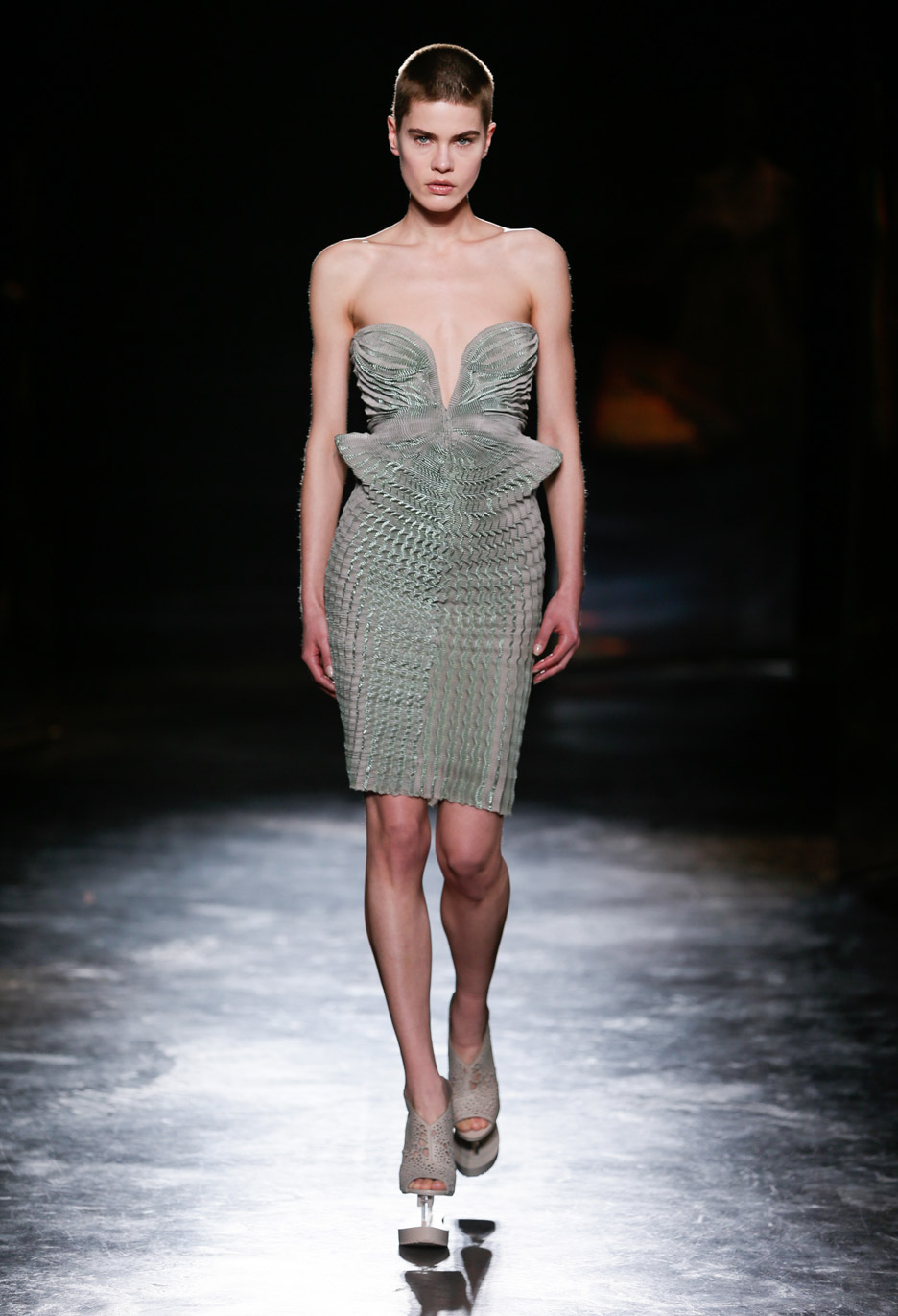
The collection also features two 3D-printed dresses named Magma. Each of these pieces were are made by combining flexible thermoplastic polyurethane (TPU) printing with polyamide printing to form a "fine web". One of the dresses is stitched from 5,000 3D-printed elements.
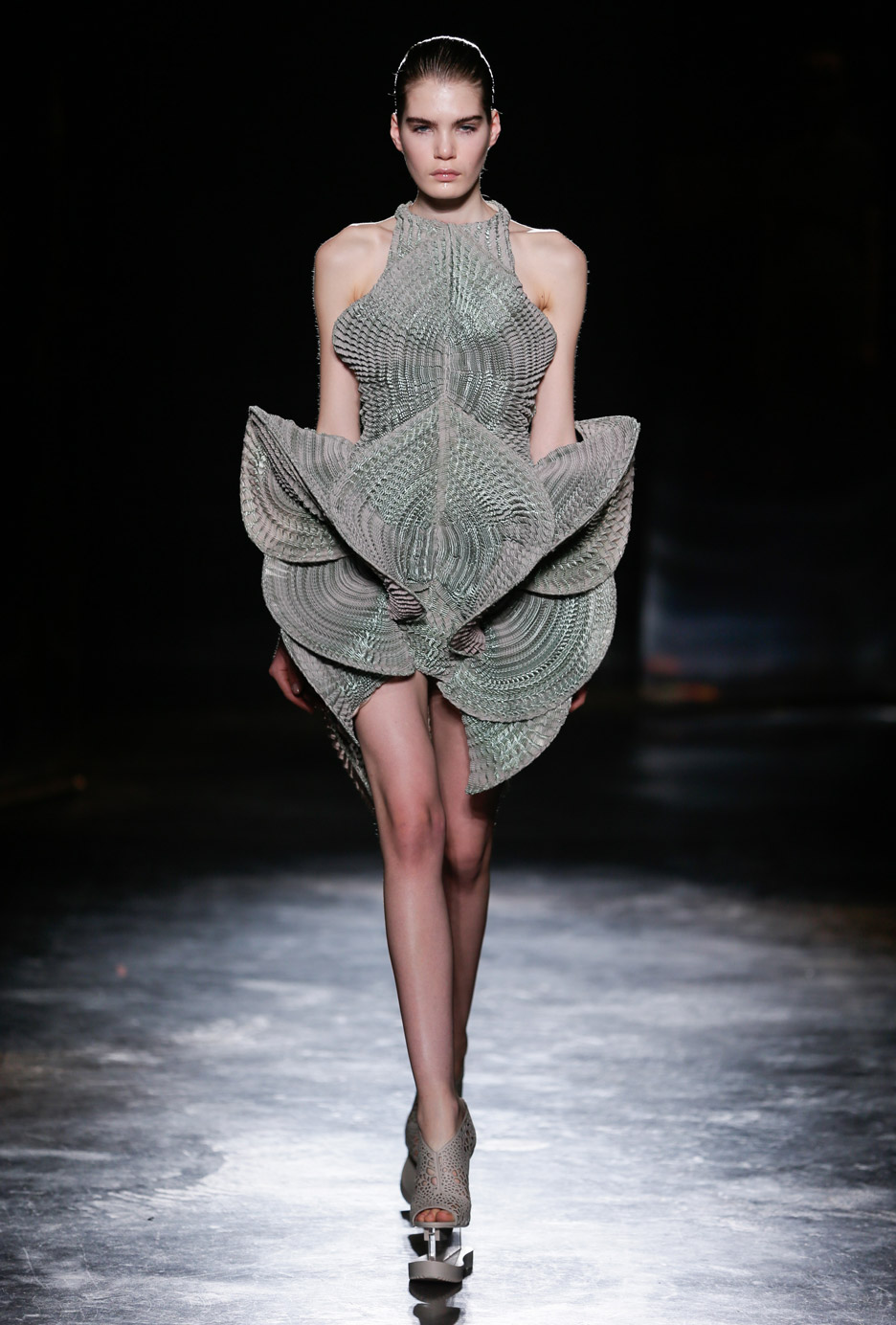
Laser-cut leather shoes were created in collaboration with UK brand Finsk. Similarly to the footwear in van Herpen's Spring Summer 2016 collection, they featured a thin platform to create the illusion of the wearer being suspended above ground.
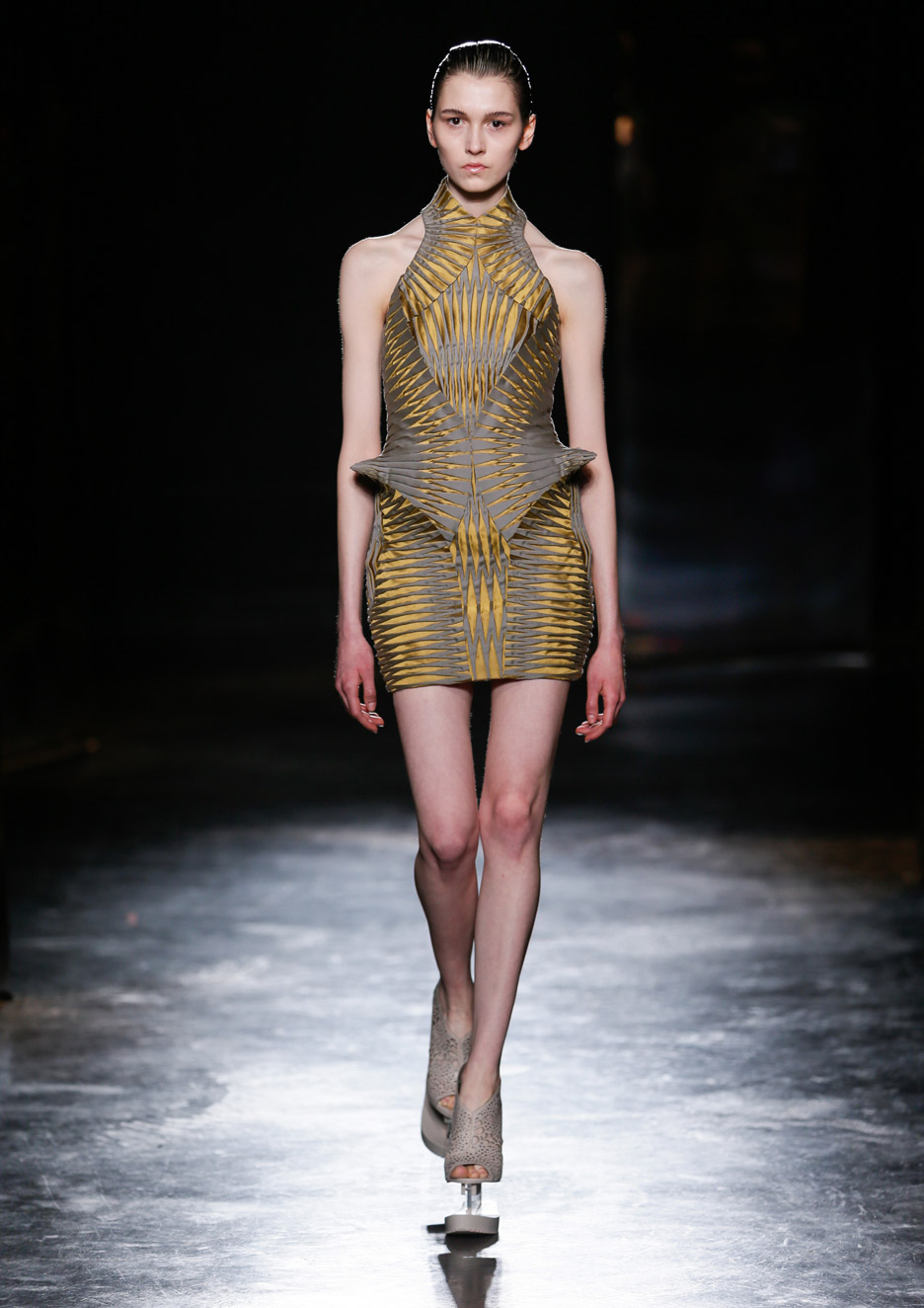
The idea of being in a dream-like state was extended to the audience through the design of the show space.
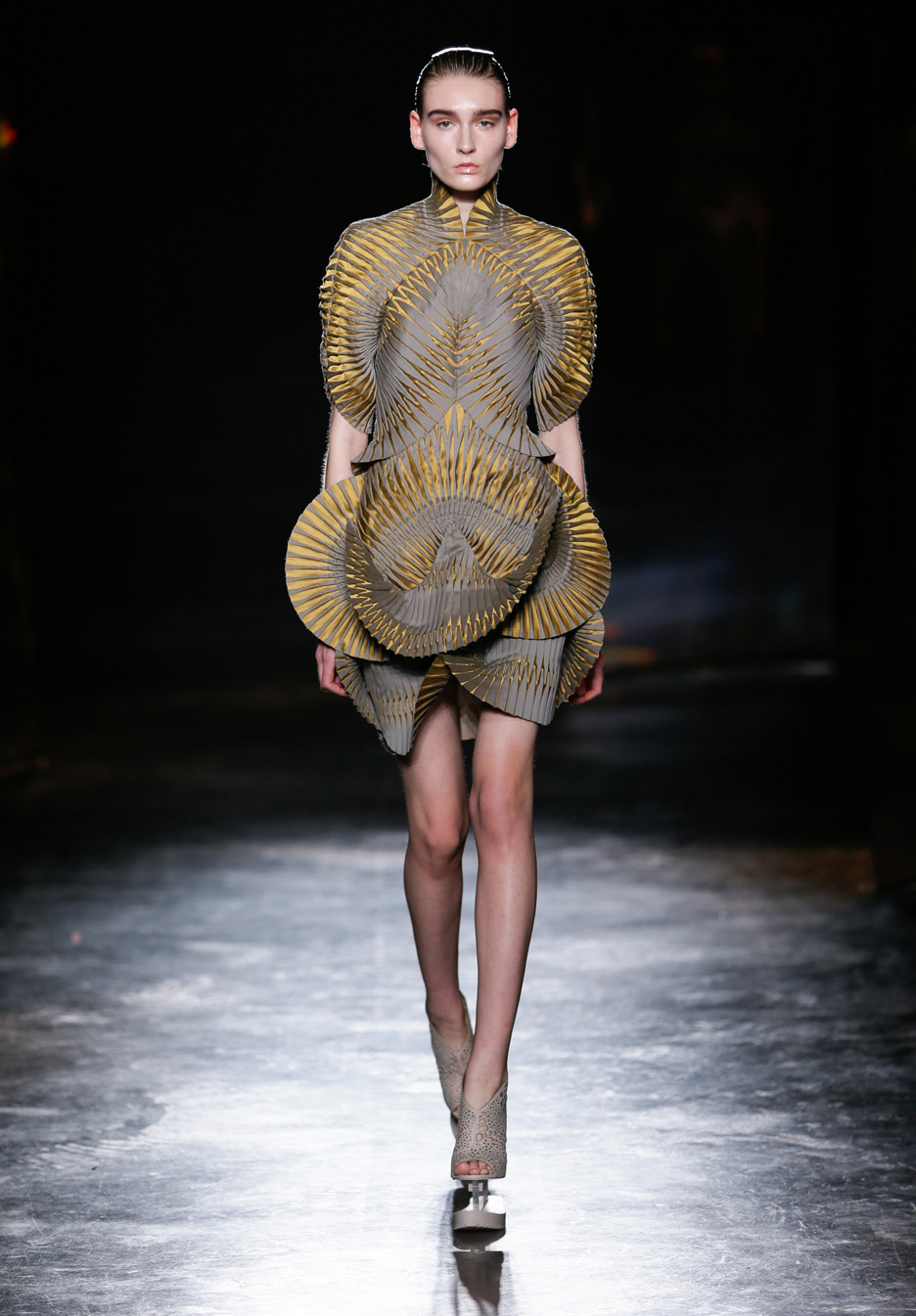
"Both the models and the audience are mirrored as one in the show space, creating a closeup and intimate experience," said the designer.
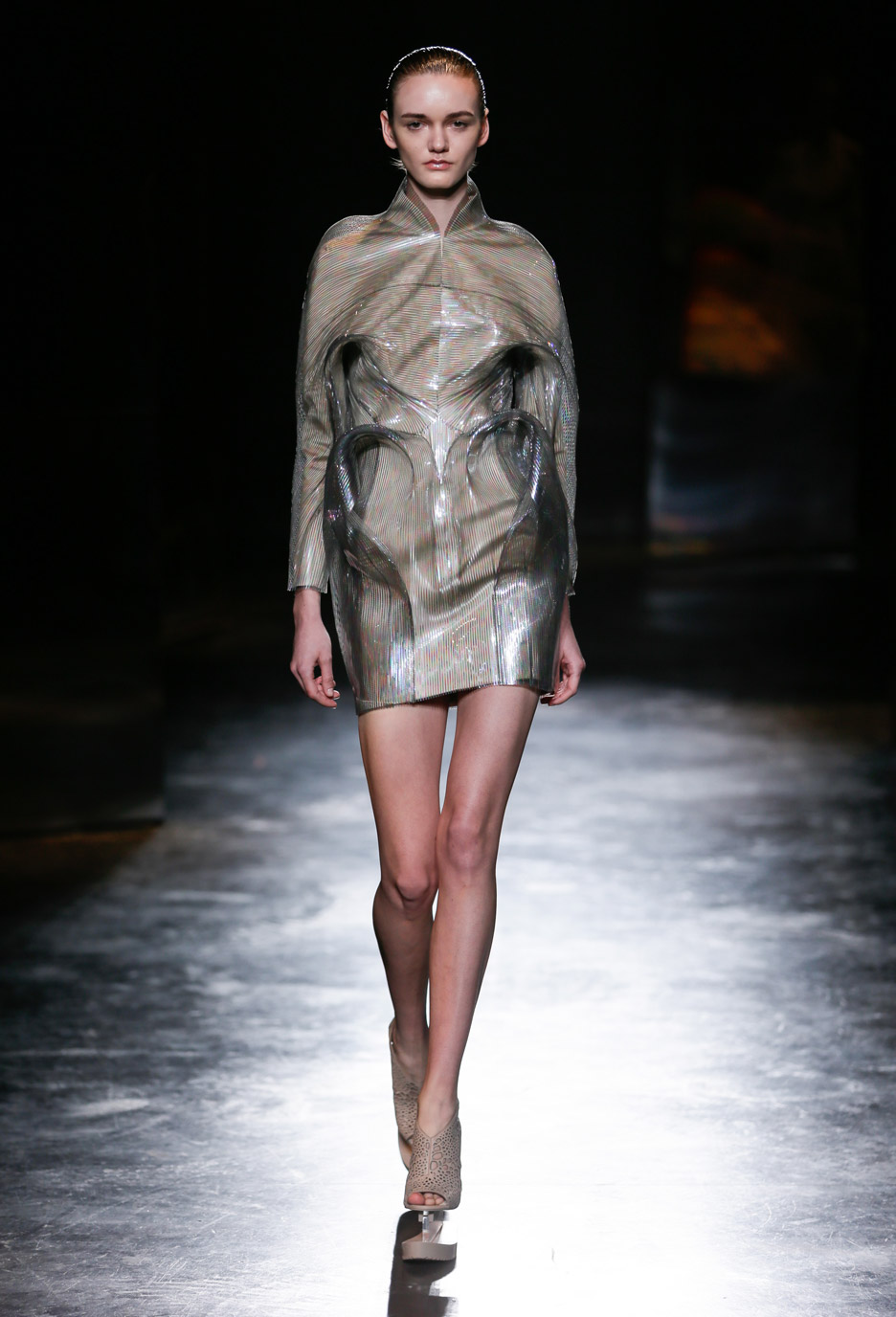
Each of the 17 models stood behind large optical light screens – more commonly used in television technology – which acted as both mirror and window.
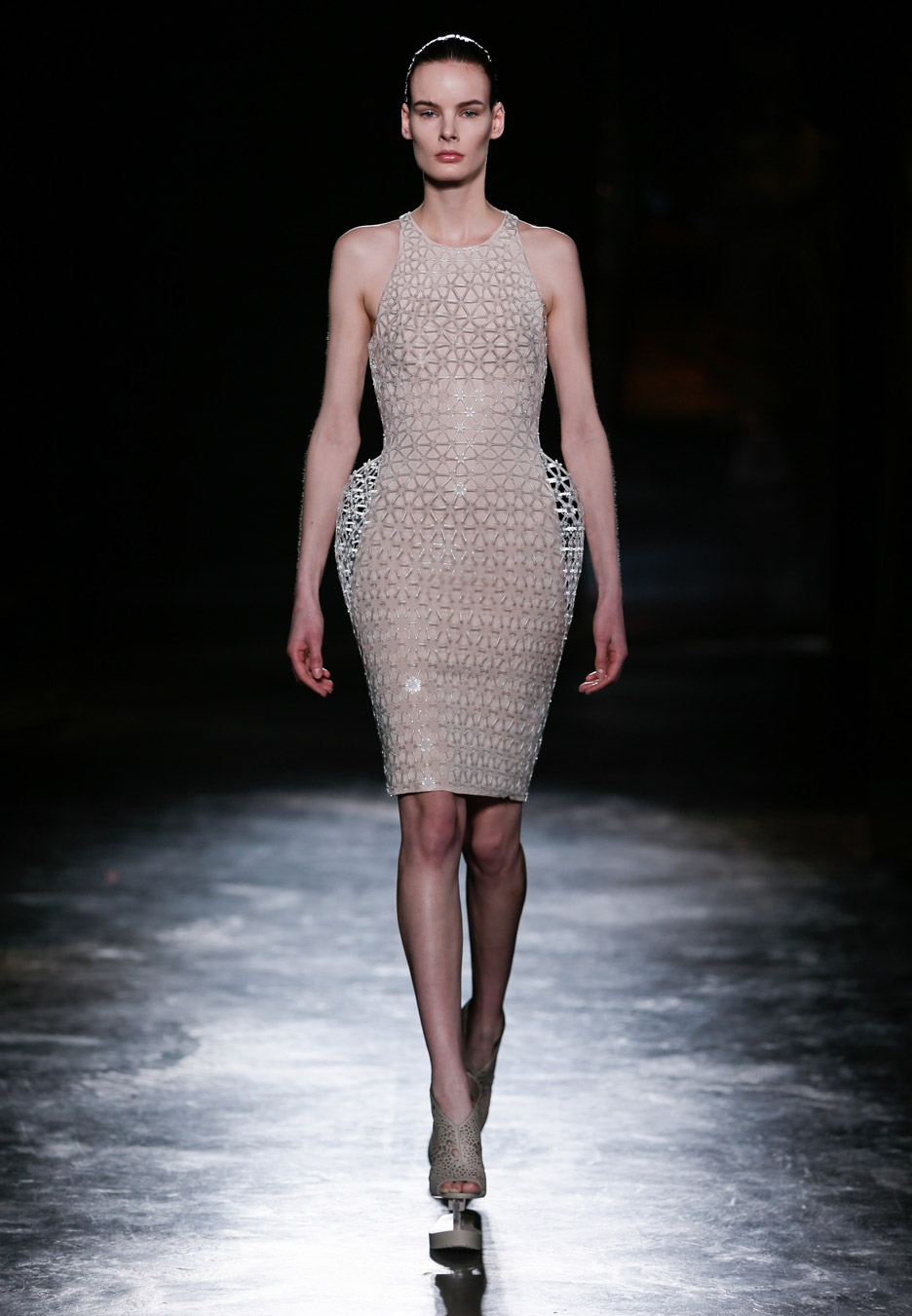
As well as creating rainbow-coloured effects, the screens reflected a doubled image that shifted depending on the model's position and the audience's viewing angle.

Herpen's previous collections have included a variety of 3D-printed garments, as well as models suspended in vacuums between plastic sheeting. Last season, she used robots to print and weave a dress over an actress from Game of Thrones.
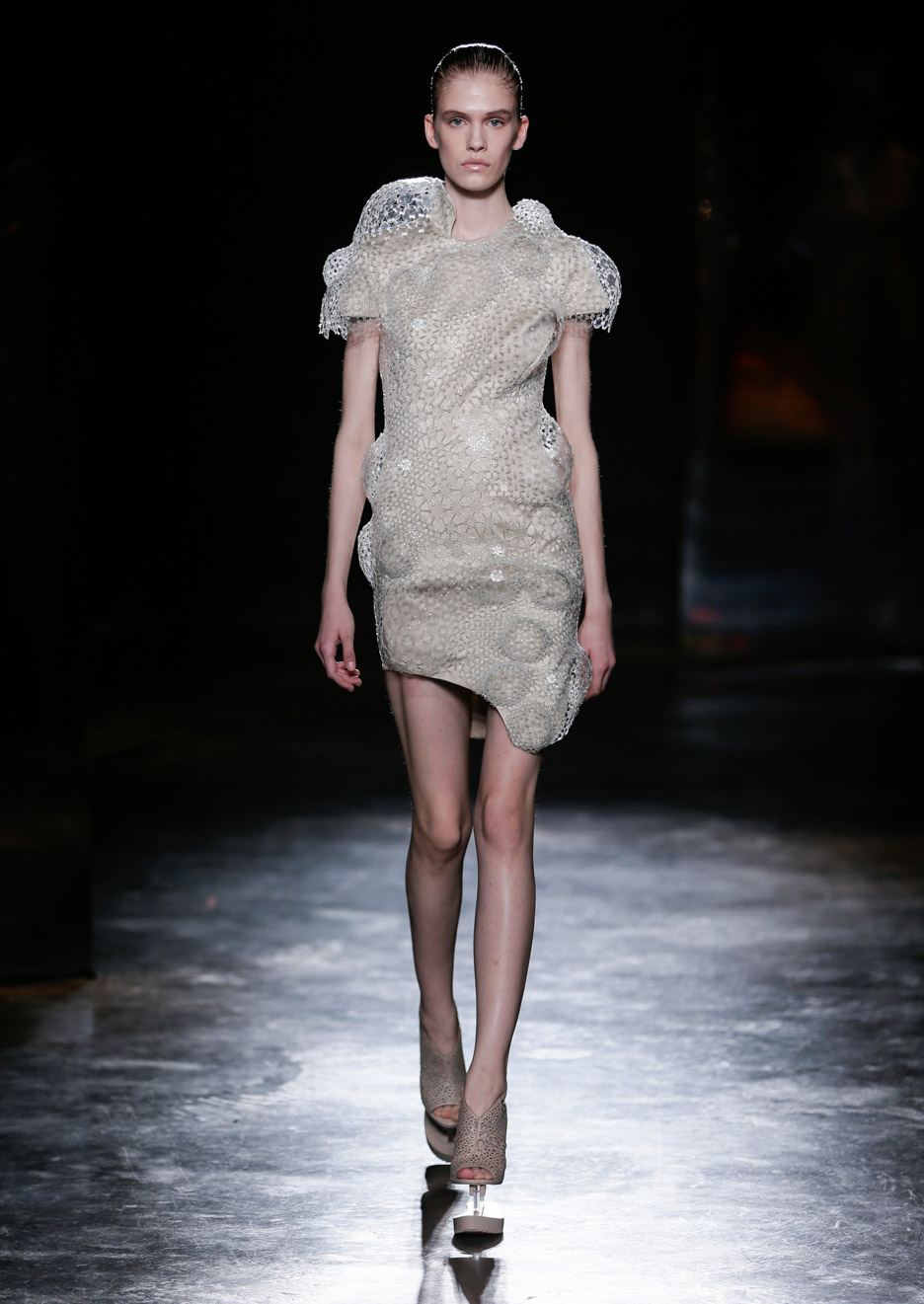
This season's Paris Fashion Week took place from 1 to 9 March 2016. At an earlier show in Milan, Jeremy Scott presented a dress made of a two-tiered crystal chandelier, while Sibling showcased 1980s-influenced "daytime disco" outfits in London.